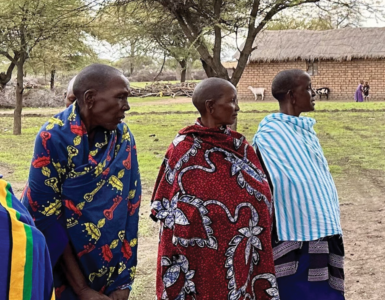DOUBLE WHAMMY: Amid the wild celebrations greeting the South Americans’ triumph over the French in Qatar two years ago, a surge of the virus peaked in the background…
By Len Maseko
International research findings released today have revealed that, while Argentina’s football icon Messi revelled in the glory of finally lifting the World Cup in Qatar in 2022, a merciless Covid quietly surged among legions of football fans with mass infections and subsequent hospitalisations in the background.
The 2022 FIFA World Cup, which ended with a tight win for Argentina over France on penalties, was also a triumph for Covid 19. This is according to new research published today and conducted by Canada’s York University, which used the 2022 FIFA World Cup as a case study to help determine the best ways to mitigate virus spread and hospitalisations at mass gatherings in the future.
York University researchers recorded a significant jump in the number of cases of Covid infections during the tournament, leading to mass hospitalisations of fans, some of which they say could have been prevented. Prior to the FIFA World Cup, COVID-19 cases and hospitalisations were declining in Qatar – but began to rise during the tournament peaking at the beginning of the quarter final and beyond, the study found.
When conducting the research, the team used a technique to sample initial conditions stemming from possible matches held between visiting teams, which then formed the basis of independent simulations of each game.
Details of the research are contained in a paper, titled “Modelling disease mitigation at mass gatherings: A case study of COVID-19 at the 2022 FIFA World Cup”, which was published in the journal PLOS Computational Biology.
York postdoctoral fellow Martin Grunnill, who led the study along with fellow academic Professor Jianhong Wu, found that pre-travel screenings did little to prevent infections and hospitalisations.
“Pre-match screening of spectators and match staff, however, with either a rapid antigen test half a day before or with a reverse transcription polymerase chain reaction test one and a half days before a match, was more effective than pre-travel screening,” the pair said.
The researchers found doing both pre-travel and pre-match testing had even better outcomes, but what worked best was ensuring all visitors had a COVID-19 vaccination, a second or booster dose, within a few months of departure to the tournament.
“That precaution reduced the rate of infection and particularly the rate of hospitalisations,” says Grunnill.
“The ambitious goal of the partnership research includes developing modelling technologies that can be used to assist in the preparation of major mass gathering events, whether religious or sports related in nature or a major festival,” says Wu. “We hope these platforms can be used to provide input into how to help manage respiratory infection risk for the next FIFA World Cup, hosted by North America, and the Olympic Games in Paris this summer.”
Wu points out that even before COVID-19, large events attracting tens of thousands of people spurred the spread of communicable diseases, sometimes globally.
“In the case of international events like the FIFA World Cup where visitors come from all over the world and return home, there is a higher chance of infections spreading beyond the host country,” says Grunnill.
The work is part of an on-going York-Sanofi collaborative project, funded by the Natural Science and Engineering Research Council of Canada, which aims to develop a generic modelling framework tailored to specific events involving intensive social-economic activities to support preparing those events with minimal risk of disease outbreak and spreading. York University is a modern, multi-campus, urban university located in Toronto, Ontario.
‘CRAZY ABOUT YOU’
TIZZ: Love scrambles the brain and scientists can now tell us why…
By WSAM Correspondent

Love is blind, the saying goes, and thanks to a world-first Australian study, we are now a step closer to understanding why.
It is well known that romantic love changes the brain, releasing the so-called love hormone oxytocin, responsible for the euphoria we feel when falling in love.
Now, researchers from the ANU, University of Canberra and University of South Australia have measured how a part of the brain is responsible for putting our loved one on a pedestal in that first flush of romance.
In the world’s first study investigating the link between the human brain’s behavioural activation system (BAS) and romantic love, researchers surveyed 1556 young adults who identified as being “in love”.
The survey questions focused on the emotional reaction to their partner, their behaviour around them, and the focus they placed on their loved one above all else. It turns out that when we are in love, our brain reacts differently. It makes the object of our affections the centre of our lives.
ANU lead researcher and PhD student Adam Bode says the study – recently published in the journal Behavioural Sciences – sheds light on the mechanisms that cause romantic love.
“We actually know very little about the evolution of romantic love,” Bode says. “As a result, every finding that tells us about romantic love’s evolution is an important piece of the puzzle that’s just been started.
“It is thought that romantic love first emerged some five million years ago after we split from our ancestors, the great apes. We know the ancient Greeks philosophised about it a lot, recognising it both as an amazing as well as traumatic experience. The oldest poem ever to be recovered was in fact a love poem dated to around 2000 BC.”
University of Canberra academic and UniSA Adjunct Associate Professor, Dr Phil Kavanagh, says the study shows that romantic love is linked to changes in behaviour as well as emotion.
“We know the role that oxytocin plays in romantic love, because we get waves of it circulating throughout our nervous system and blood stream when we interact with loved ones,” Dr Kavanagh says.
“The way that loved ones take on special importance, however, is due to oxytocin combining with dopamine, a chemical that our brain releases during romantic love. Essentially, love activates pathways in the brain associated with positive feelings.”
The next stage of the research involves investigating the differences between men and women in their approach to love, and a worldwide survey identifying four different types of romantic lovers.






